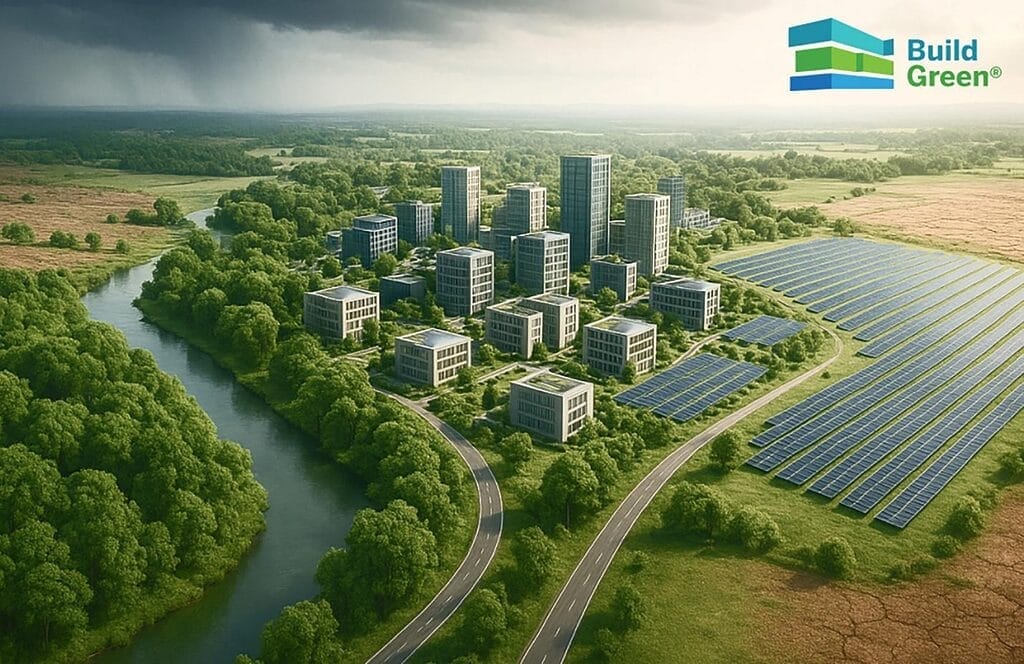
As climate change accelerates, the question for organizations and communities is no longer whether they will be affected, but how well prepared they are. Extreme weather events, resource scarcity, shifting regulations, and evolving market expectations are reshaping the risk landscape across every sector.
Under these pressures, climate risk assessment has become a cornerstone of sustainability strategy – providing a framework to identify, evaluate, and manage climate-related risks and opportunities.
Within this framework, two complementary pillars stand out: climate mitigation and climate adaptation. Rather than competing priorities, they represent interdependent strategies that together shape how effectively an organization can minimize its climate risks while advancing the low-carbon transition.
Climate Mitigation: Addressing the Root Cause
Mitigation refers to actions that directly address the drivers of climate change, primarily greenhouse gas (GHG) emissions. Its objective is to reduce or remove emissions resulting from human activities, thereby limiting global warming itself.
From a risk perspective, mitigation reduces transition risks, such as exposure to future carbon pricing, regulatory penalties, or market shifts toward low-carbon products and services.
Typical mitigation strategies include:
- Renewable energy deployment – replacing fossil fuel-based energy with wind, solar, or hydroelectric power.
- Energy efficiency improvements – reducing operational emissions across buildings, infrastructure, and industrial processes.
- Afforestation and reforestation – enhancing natural carbon sinks.
- Carbon capture and storage (CCS) – capturing emissions from industrial sources or directly from the atmosphere.
- Low-carbon mobility and logistics – electrification and optimization of transport systems.
In practice, climate mitigation efforts are quantified through GHG inventories, carbon accounting, and target setting, often aligned with frameworks such as the Science Based Targets initiative (SBTi). These actions form the backbone of a company’s decarbonization pathway, and, by extension, its long-term competitiveness in a net-zero economy.
Climate Adaptation: Managing the Consequences
While mitigation addresses the causes of climate change, adaptation focuses on managing its inevitable impacts. Even under the most optimistic mitigation scenarios, global temperatures are expected to continue rising, resulting in more frequent and severe climate-related events.
Adaptation measures strengthen physical resilience and reduce vulnerability to climate hazards such as floods, droughts, heatwaves, and storms. In the context of risk assessment, they target physical risks – both acute (e.g., extreme events) and chronic risks (e.g., gradual changes in temperature or precipitation patterns).
Examples of adaptation strategies include:
- Resilient infrastructure design – ensuring buildings and urban systems can withstand future climate conditions.
- Water management and conservation systems – mitigating the impact of drought and enhancing resource efficiency.
- Nature-based solutions – restoring wetlands, forests, or mangroves that serve as natural buffers and carbon sinks.
- Early warning and disaster preparedness systems – strengthening response capacity to reduce loss and damage.
- Climate-resilient agriculture – promoting drought-tolerant crops and sustainable irrigation practices.
Adaptation measures are typically informed by climate scenario analysis and vulnerability assessments, which evaluate how assets, operations, and supply chains may be affected under different climate futures.
The Interdependence of Mitigation and Adaptation
Mitigation and adaptation are often presented as distinct strategies, but within a comprehensive climate risk assessment, they function as mutually reinforcing mechanisms.
- Mitigation without adaptation may reduce future emissions but still leaves organizations exposed to near-term physical risks.
- Adaptation without mitigation may protect against current impacts but will become increasingly unsustainable as global temperatures rise.
Integrating both dimensions ensures a balanced climate resilience strategy, where long-term decarbonization is pursued alongside immediate risk reduction.
For example:
- A low-carbon building that also incorporates flood-resilient design and passive cooling achieves dual climate benefits.
- A renewable energy project that includes ecosystem restoration can both mitigate emissions and enhance adaptive capacity.
- A corporate ESG strategy aligned with the EU Taxonomy and TCFD recommendations should link emission reduction targets (mitigation) with resilience planning and disclosure (adaptation).
Climate Risk Assessment as a Decision Framework
A robust climate risk assessment integrates both dimensions, mitigation and adaptation, into a unified evaluation process. It enables organizations to:
- Identify and classify risks (physical, transition, liability).
- Quantify exposure and vulnerability across assets, operations, and value chains.
- Develop coordinated mitigation and adaptation actions aligned with global standards (EU Taxonomy, CSRD, ESRS, TCFD, GRESB, and SBTi).
- Monitor and report progress through structured ESG disclosures and continuous improvement cycles.
This dual approach not only protects against future uncertainty but also positions organizations as proactive and resilient actors in the transition to a climate-resilient economy.
A Balanced Path Forward
The path forward is not about choosing between mitigation and adaptation; it’s about ensuring they work in tandem within a coherent risk management framework.
Mitigation defines how we shape the global trajectory of climate change.
Adaptation defines how we endure and thrive amid its effects.
Together, they transform climate risk from a threat into an opportunity, one that drives innovation, strengthens resilience, and creates lasting value.
At BuildGreen, we support organizations in translating climate risk assessments into actionable strategies, integrating both mitigation and adaptation measures within broader ESG and decarbonization frameworks. Our expertise helps clients align with international standards such as the EU Taxonomy, TCFD, and SBTi, while strengthening their resilience to a changing climate.
Learn more about our sustainability and climate risk services by visiting www.build-green.com.















